#ile saint jean
Explore tagged Tumblr posts
Text
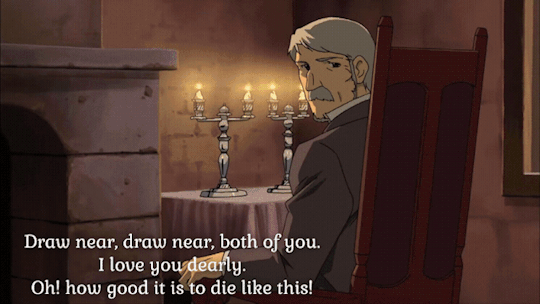
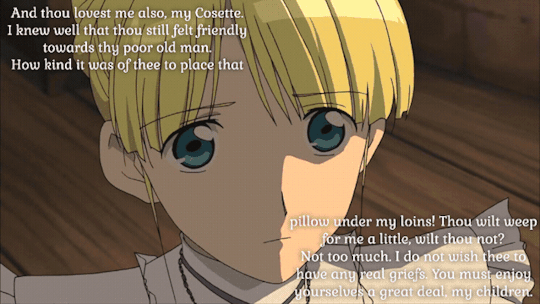
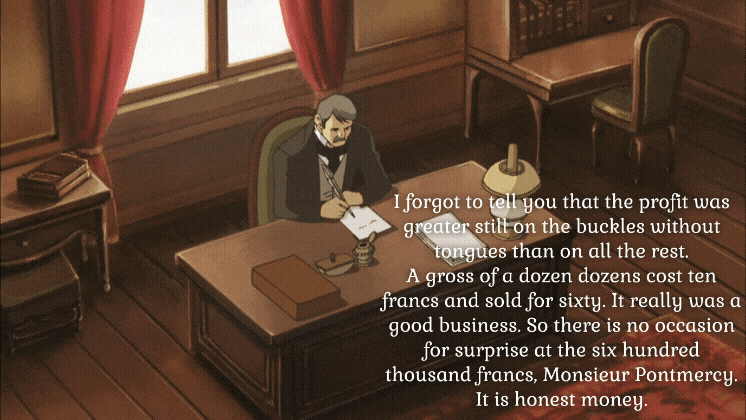









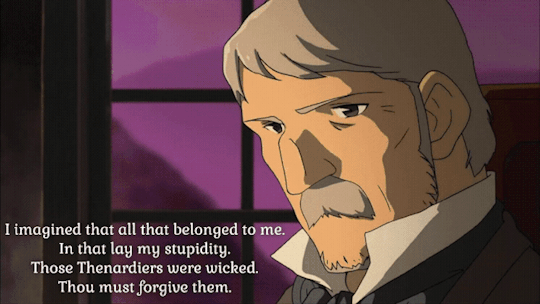





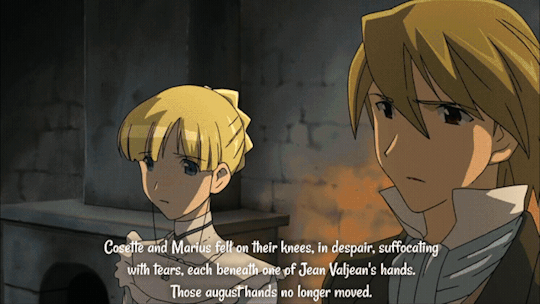

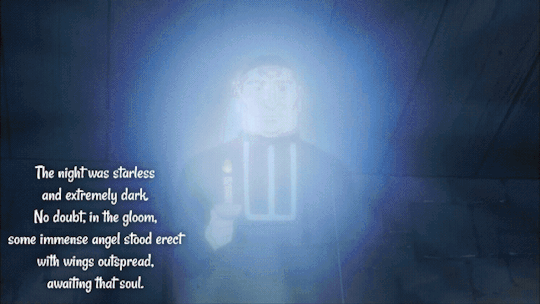
The Last Moment of Valjean, Volume 5, Book 9, Chapter 5.
Clips from <Il cuore di Cosette>.
#Les miserables#les mis#My Post#Jean Valjean#Cosette#Father and daughter#Owl and Wren#Marius#Lark and Booby#M. Madeleine#The Silver Candlesticks#Bishop Myriel#Little Mlle. Lanoire#Poor Lark#The Dark Forest#When Two Anxious Hearts First Met#Fantine#Lady all in White#Angel and Lark#Poor Mother...#Sister Simplice#Fantine's Death#Valjean's Death#Finally this moment has come.#The journey of a convict who turned into a saint.#It's such a Nice Thing that Tumblr allowed more than 10 images so I can write the entire quote of Valjean's last words into a single post!#Also I love this adaptation since they used the Bishop and Fantine as two angels instead of Eponine like in the 2012 film#The Brick#Il cuore di Cosette#Les Mis Letters
19 notes
·
View notes
Text

The Île Saint-Louis apartment of heiress, writer, and activist Nancy Cunard, as imagined by Jean-Michel Frank.
2 notes
·
View notes
Text

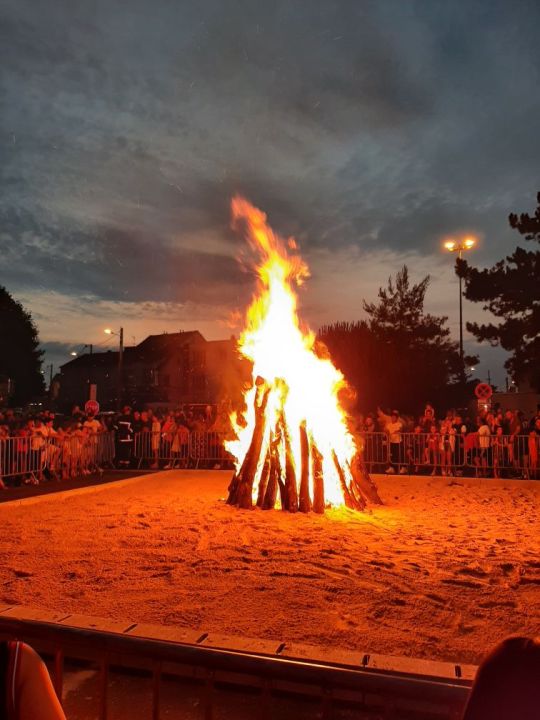
Le traditionnel feu de la Saint Jean pour célébrer le solstice d'été 🔥, Conflans-Sainte-Honorine, Yvelines, France, juin 2023
13 notes
·
View notes
Text
Pionier Niki de Saint Phalle en haar droomproject Il Giardino dei Tarocchi (deel II)
Hier mijn deel 2 over Niki de Saint Phalle's Giardino dei Tarocchi. Haar droom om een plek van vreugde te creëren kwam uit, ondanks gezondheidsproblemen vanwege haar kunst. Nu genoot ik volop van haar indrukwekkende totaalkunstwerk en de blijvende impact
Twee weken geleden schreef ik er al over. Over dat grootse kunstproject van Niki de Saint Phalle (1930-2002). Haar Giardino dei Tarocchi in Italië. Waar ze een droom waarmaakte. “Het is mijn lotsbestemming een plek te maken waar mensen kunnen samenkomen en gelukkig kunnen zijn: een tuin van vreugde”, zo schreef ze eens. En het volgende statement van haar, als feministisch ingestelde kunstenaar,…
#20e-eeuwse kunst#Bekende vrouwelijke kunstenaars#beroemde vrouwelijke kunstenaars#Bezienswaardigheden Toscane#Biografie Niki de Saint Phalle#buitenkunst#Feministische Kunst#Grosseto kunsttuin#hedendaagse kunst#Il Giardino dei Tarocchi#Italiaanse kunsttuinen#Italiaanse kust#Italiaanse musea#koeienschedel#kroonluchter#kunst en architectuur#kunst en feminisme#Kunst en spiritualiteit#Kunst en therapie#kunst in de natuur#Kunst in Italië#Kunstenaar Jean Tinguely#Kunstervaring Italië#Kunstreizen Italië#kunsttourisme Italië#Moderne kunst Italië#monumentale sculpturen#mozaïekkunst#Murano#Nana beelden
0 notes
Text
Jean Saint-Vil -Il suffit d'un coeur
Il suffit d’un coeurPour battre la chamadeD’un amour naissantQui marque au fer chaudTa petite vie tranquilleIl suffit d’une larmePour faire dévalerUn torrent de larmesDans les yeux émusQui ne peuvent plus s’ouvrirIl suffit d’un rirePour égailler la joieTout autour de toiComme une pluie d’étoilesIl suffit d’un arbreQui cache la forêtQue l’on croyait viergeIl suffit d’une femmePour changer ta…

View On WordPress
0 notes
Text

Saint John the Baptist Preaching in the Desert
Artist: Jean Baptiste Henri Deshays (French, 1729–1765)
Date: c. 1758–1764
Medium: Oil on Canvas
Collection: Art Institute of Chicago, Chicago, IL, United States
Description
A precocious talent, Jean-Baptiste Deshays married the daughter of Rococo artist François Boucher and became his protégé. Although best known as a painter of religious subjects, Deshays often employed the soft, highly fluid manner that Boucher used for his amorous “boudoir” pictures. In fact, this work was for a long time believed to be by Boucher. The subject of the painting derives from the Gospel of Matthew: seated before the multitude and with arms dramatically outstretched, John the Baptist warns, “Repent ye, for the kingdom of heaven is at hand.”
#christianity#painting#john the baptist#desert#jean baptiste henri deshays#french painter#oil on canvas#gospel of matthew#biblical scene#biblical art#18th century painting#clouds#figures
40 notes
·
View notes
Text

« Deux camps se font face. L’un croit aux miracles. L’autre n’y croit plus. Celui qui soulèvera les montagnes est celui qui a conservé la foi. Il vaincra. Chez l’autre, le doute mortel a détruit tout ressort. Il sera vaincu. »
Jean Raspail, Le Camp des Saints (1973)
8 notes
·
View notes
Text
saga: Soumission & Domination 371
Noël 2015-1
La fin décembre arrive, nous réservons nos places en première pour rentrer en France.
Je reviens, accompagné de Tyler, Dan et Duke son petit frère. Ce dernier, pour qui c'est la première fois qu'il vient en Europe, est assez excité pendant tout le vol.
A Roissy, nous attendent PH, Ludovic et Enguerrand avec Max. Afin d'être tous ensemble, ils ont loué un Grand Espace. Les bagages entassés dans le coffre, nous partons. Je suis à coté de PH qui conduit, derrière nous Ludo est encadré de Tyler et Dan, la troisième banquette est investie des plus jeunes, Duke encadré de mes deux " petits frères ".
Nous avons à peine passé la barrière de péage de saint Arnould que ça s'agite au 3ème rang ! Je me retourne et je ne vois plus qu'une tête, celle de Duke. Vu son sourire, j'imagine sans peine ce que les deux autres font.
Les deux premières rangées sont plus raisonnables même si l'envie de pomper mon mec me taraude.
J'attends qu'on soit bien engagé sur l'autoroute, que le régulateur de vitesse soit enclenché sur 135 Km/h et à mon tout je bascule sur la gauche. En dépit des cris de notre chauffeur, j'arrive à défaire ses jeans et il peut alors dire ce qu'il veut mais sa queue parle pour lui !!
Je recouvre sa bite d'une kpote humaine et ne m'arrête que quand je sens son gland au fond de ma gorge. De la banquette derrière, nous parviens des commentaires sur mon inconscience et mon irrépressible et incontrôlée envie de sexe. Il n'empêche, je me régale !!
Le temps passe vite et nous voilà déjà à notre sortie.
Quelques minutes plus tard nous arrivons au blockhaus. Les travaux à gauches ont l'air terminés alors qu'à droite le bâtiment que j'ai racheté laisse encore voir que les échafaudages à l'intérieur.
Duke et Tyler sont étonnés de l'architecture même si Dan leur en avait déjà parlé.
On passe tout de suite au 3ème laisser les bagages et montons au-dessus. Marc est là à nous attendre avec Nathan. Je lui tombe dans les bras et nous nous roulons un patin digne de notre si longue séparation. Tout bandants, nous nous décollons quand même afin que je présente tout le monde. Si Marc fixe un peu plus Duke que mes deux amis, je ne note pas de recul de ce dernier à l'approche de mon mec. Bon, je me répète mais Marc a plus un physique de 30 que de ses 40 passés.
Alors que nous commençons l'apéritif, nous rejoigne Joao et Romain. La largeur d'épaule de Romain interpelle mes américains, tout comme la peau cuivrée de notre Brésilien.
Tyler est estomaqué par mon aplomb alors que Dan commence à s'y faire (je passe plus de temps avec lui !) et que Duke s'en fiche royalement.
Alors que nous dinons tous ensemble, la fatigue du décalage horaire nous rattrape et nous descendons dormir. Je laisse Enguerrand et les deux jeunes s'occuper de Duke. PH organise les autres invités pendant que Marc profite de mon état de faiblesse pour me faire subir les derniers outrages ! Avec mon consentement cela va sans dire.
Mort de fatigue, je m'endors dès que j'ai joui, alors même que Marc me sodomise encore.
Réveil en pleine nuit au creux des bras de Marc. Je me glisse hors du lit et mate mes amours recomposer l'espace que mon levé a laissé vacant. J'enfile un jock puis je sors voir où sont les autres.
Chambre de Joao et Romain, bien sages tous les deux, évidemment Duke est emmêlé avec la triplette. Tyler et Dan occupent une autre chambre chacun de son coté du lit !
Je monte boire un verre et alors que je vais pour rentrer dans notre chambre, Enguerrand me fait signe de venir. Grosse pelle qui me prouve qu'il est bien réveillé et aussi une érection qui m'indique que je ne lui suis pas indifférent.
Il m'attire dans leur chambre et me fait tomber sur le lit. Je réveille par là même les autres occupants qui aussitôt me font la fête. Max me roule un patin alors que je sens les autres bouches parcourir mon corps. Mon jock est écarté et une douce chaleur recouvre mon sexe jusqu'à sa base. Mes boules occupent une autre bouche alors que la dernière s'occupe de mes tétons (surtout celui qui est intact).
Puis ils tournent, chacun voulant profiter d'une autre partie de mon corps. Duke ne peut s'empêcher de laisser échapper un " amazing " qui résume bien la situation.
Comme je veux me redresser et devenir plus actif, ils m'immobilisent et j'entends Enguerrand me dire qu'ils s'occupent de tout. OK je laisse faire.
Les langues s'occupent à garder mon érection à son plus " gros " niveau et servent aussi à préparer leurs rondelles respectives. C'est tout juste s'ils ne tireraient à la courte paille pour connaitre l'ordre de passage sur ma bite.
Enguerrand grille les autres et s'assoit sur mon gland. Je sens bien son anneau s'ouvrir sous la force de gravité qui le tire vers le bas. Son soupir n'est pas feint et rend jaloux les trois autres. Après quelques minutes à s'éclater sur ma queue, les autres l'éjectent et Duke le remplace. Comme Nathan lui dit que c'est pas sympa car il avait dû en profiter avant de venir en France, Duke lui répond que pas tant que ça et surtout pas avec eux trois à ses côtés.
Ce n'est qu'après les avoir tous eus assis sur moi que nous avons changé les positions pour finir en petit train : moi enculant Max, lui-même enfoncé dans la rondelle d'Enguerrand en train d'envahir les USA eux même défonçant le dernier arrivé de la triplette : Nathan.
Bonnes prises de plaisir pour tous et je finis la nuit dans leurs bras.
Réveil, je rejoins ma chambre : vide, je prends une douche et enfile un aussiebum avant de monter prendre un café.
Tous les autres sont déjà là, bises, pelles ils ont tout l'air de se foutre de moi. Je ne comprends pas jusqu'à ce que les jeunes nous rejoignent et se fixent sur la projection (le " déjeuner sur l'herbe " version vidéo). Je prends de l'angle pour la voir et comprend aussitôt. Ils nous ont photographié tous les 5 et là, sous nos yeux s'étale la preuve. De moi n'est visible que ma tête et quelques parcelles de peau sous l'enchevêtrement des corps imberbes des 4 petits jeunes.
Alors que je veux savoir ce qui se passe chez notre nouveau voisin, mes amours m'interdisent la vue depuis la terrasse sous prétexte qu'ils y ont installé le sapin de Noël et que c'est une surprise.
Je passe la matinée avec PH fin de faire le point sur ma petite " société ". De François et Jona nous n'avons que des nouvelles " officielles " que tout va bien mais qu'ils ne sont pas joignable. André que je joins par téléphone me dit de ne pas m'en faire côté comptabilité, tout va bien, même avec l'achat du bâtiment de droite et des travaux. Pierre encore étudiant en architecture a pris le dossier en main et les travaux devisés et commencés par la boite de Maçon sont justement chiffrés.
Je vais directement voir ma nouvelle propriété Annexe 1
Au rez de chaussée, les travaux d'aménagement du garage de mécanique pour moto sont quasiment terminés comme pour le Blockhaus, un grand portail sur la rue permet l'entrée de camion et pareil pour l'accès à la cour qui jouxte notre " serre ". Du coup, un mur de verre sépare ce passage de l'atelier proprement dit. Tout en laissant sur l'épaisseur du bâtiment 3m de profondeur pour garer les motos. Dans l'atelier proprement dit, se trouvent trois ponts pour moto, et autour tout le matériel nécessaire. A l'étage, l'appartement de Samir et Ammed avance bien. Toutes les cloisons sont montées (il n'y en a pas beaucoup, juste de quoi séparer les chambres et les salles de bain), la plomberie et l'électricité sont aussi finies. Il ne reste que les peintures à faire. Un deuxième appartement a été créé avec la même distribution : un tres grand séjour avec cuisine américaine, deux chambres avec chacune leur dressing et leur salle de bain le tout pour 150m². Au second rien encore.
La cour est encore goudronnée et je me tâte quant à la transformer en jardin. J'y réfléchirais plus tard.
Les deux jours qui nous séparent de Noël se passent à faire visiter la ville et les environs aux Américains. Nous débarquons aussi chez ma mère. Elle apprécie mes amis d'outre atlantique et nous réussissons à nous éclipser 15mn le temps d'une baise expresse juste destinée à assouvir notre envie commune. Nous convenons de nous retrouver pour le déjeuner du 25 qui pour la première fois aura lieu au Blockhaus en présence des parents de Ludovic et de ceux de Max. Il faut parfois savoir quand céder aux convenances !! Bon, Pablo l'accompagnera puisque son frère sera arrivé de Barcelone.
Le 24 après déjeuner nous allons chercher Ernesto à l'aéroport. J'y vais avec seulement PH et Ludovic. Embrassades à la sortie de la zone douanière. Cela fait une éternité que je ne l'avais vu et je m'aperçois qu'il m'avait terriblement manqué au besoin que j'ai de l'avoir dans mes bras.
Quand nous arrivons au Blockhaus, Tyler et Dane sont impressionnés par Ernesto, Dane plus par le paquet qui se devine derrière les boutons de la braguette alors que c'est plus l'aspect général pour Tyler. Quand je demande où est Duke, réponses amusées : avec les petits bien sûr, chez les parents d'Enguerrand.
Ils rentrent pour le diner. Les trois jeunes sautent sur Ernesto pour lui faire la fête jusqu'à ce qu'il se dégage en les éjectant sur les canapés. Il fait alors le même effet sur Duke qu'il a fait à Dane.
En prévision du lendemain, Samir et Ammed nous ont fait un diner léger. Ce qui convient tout à fait aux activités qui vont suivre. Ça discute principalement en Anglais afuin que nos invités puissent profiter de nos conversations.
Après le café ça dérape !! Ce sont les 4 jeunes qui démarrent en premier. Duke brule la politesse à son frère en s'attaquant le premier à Ernesto. Je ne le laisse pas seul sur le coup, je suis trop en manque de mon ibère préféré. Quand Duke découvre les 24cm x 6 enserrés du cockring en or rose que je lui avais offert en 2012, il devient encore plus chaud. J'ai beau être plus costaud que lui, c'est quand même sa rondelle qui profite la première de la bite d'Ernesto.
Ce dernier me fait un petit signe d'impuissance avant de limer de bon coeur notre jeune américain. J'arrive à l'éjecter de son " ancrage " et le remplace aussitôt, faudrait pas qu'un gland pareil se prenne un coup de froid !
C'est trop bon ! Je me penche et je ferme notre échange par une pelle appuyée. Enguerrand vient chercher Duke et lui dit de nous laisser tranquille un moment. Je le regarde et lui fait un clin d'oeil qu'il me rend avant de pousser Duke dans les bras de Marc.
Nous avons beau être tous à baiser à coté les uns des autres, j'arrive à m'isoler mentalement et avec Ernesto nous faisons l'amour intensément. Nous échangeons nos places plusieurs fois avant de jouir. Je retrouve avec plaisir la douceur moite de ses profondes entrées. Sa bouche qui m'avale jusqu'aux couilles comme son boyau qui colle à ma bite d'aussi près qu'une kpote. Moi-même je prends un plaisir fou à sentir en moi les va et vient de sa queue qui me fouille au plus profond. Je sais que ce n'est pas possible mais mon imagination créée dans mon cerveau les sensations exactes de l'écartement de mes tissus par le gland gorgé de sang qui termine la hampe sublime qu'Ernesto manie avec dextérité. A l'occasion d'un retournement de situation, excité à l'extrême, je lui remplis le cul de ma production en même temps que, penché sur lui, je reçois en bouche la sienne. Je garde sur ma langue les deux dernières giclées et me redresse pour les partager avec lui dans un roulage de pelle de la mort !
Les autres ne se sont pas privés non plus. Quand je relève la tête, je vois que Duke teste les capacités de mon Marc et qu'il a l'air de bien apprécier le mec ! En levrette il me voit et me dit que j'ai vraiment un mec génial.
Les trois américains sont ravi de leur début de séjour et demande si ce genre de " choses " est monnaie courante. Alors que je vais pour leur expliquer que " non, bien sûr, c'est pas si souvent que ça ", Enguerrand qui a gardé une grande capacité à dire ce qu'il pense en direct, les assure qu'effectivement quand je suis au Blockhaus, les soirées " sport " et même les autres ont tendance à finir en baise.
Pour atténuer le fait qu'il me contredise, il vient se couler dans mes bras et me rouler une pelle. Quel petit salaud !!
Jardinier

~~

~~

~~

13 notes
·
View notes
Text

"Le désir retourné de l’homme le fait vivre dans un monde à l’envers, où les valeurs sont bouleversées, où les choses ont perdu leur ordre authentique et leurs véritables proportions […] les choses désirables, l’homme les craints et les repousse, et c’est aux choses indésirables qu’il consacre tous ses soins, constate saint Maxime. L’homme déchu se met ainsi à vivre en plein délire. D’autant que perdant le sens du vrai Dieu, il en vient, dans l’orientation nouvelle de son désir et la découverte de nouvelles jouissances, à absolutiser les désirs et les plaisirs sensibles, et à travers eux leurs objets, qu’il met ainsi à la place de Dieu, comme l’explique saint Maxime :"Livré aux seules émotions des sens à l’exemple des bêtes dépourvues d’intelligence, l’homme éloigné de la beauté spirituelle et divine, trouve à travers l’expérience de la partie extérieure et corporelle de sa nature, une création qu’il élève à la place de Dieu, parce qu’elle répond mieux aux besoins de son corps." L’homme se fait alors des réalités sensibles, une multitude de faux dieux, d’idoles, qui sont de la nature de ses désirs pervertis et à leur mesure."
Jean-Claude Larchet, Thérapeutique des maladies spirituelles, 2000.
9 notes
·
View notes
Text
When Revolutionaries Break Out of Prison
Gracchus Babeuf, during his frequent imprisonments, managed to escape arrest once. During his last incarceration, he attempted to escape with the help of his wife, Marie-Anne Babeuf, but the plan failed. He sent her a coded letter. Since his wife, despite being a well-known and effective revolutionary, was illiterate (though adept with numbers), it is assumed that accomplices helped her decipher it. The letter read:
"There is only one guard inside the small courtyard; we must win him over. We will take him to Paris with us—he will be welcomed as the liberator of the people’s friends. He should come between six and eight in the evening. We’ll leave through the house you know of. For the first signal, the liberator should whistle the tune of 'Victory Singing' at noon or after. In the evening, at the desired moment, he should strike the ground three times with the butt of his rifle. Reply to me through the citoyenne as agreed.”
Here is the original text in French The message could be deciphered by taking the first and last word of each line : « Il-n’y-a-qu’un-homme-de-garde-dedans-la-petite-court-au-bout-il-faudrait-le-gagner-nous-l’emporterons-avec-nous-à-Paris-il-serait-reçucomme-le-libérateur-des-amis-du-peuple-il-faudra-qu’il-monte-de-six-à-huit-du-soir-on-partirais-par-la-maison-que-vous-savez. Il-faut-pour-premier-signal-que-le-libérateur-ce-jour-l��-à-midi-ou-après-siffle-l’air-la-victoire-en-chantant-et-le-soir-au-moment-désiréfrappera-sur-la-terre-trois-fois-successivement-avec-la-crosse-de-son-fusil-réponds-moi-par-la-citoyenne-comme-nous-en-sommes-convenus »
Felix Le Peletier Felix Le Peletier, a Jacobin deported by Bonaparte alongside many others, temporarily stayed on Île de Ré while awaiting transfer. Before his departure, he was visited by a relative, which gave him an opportunity to escape. Adding a touch of audacity, Felix informed the Minister of Justice of his escape in a letter before authorities discovered it. Parisian officials learned of the incident from Felix's letter before the local prefect could report it. His escape was facilitated by a friend :Saint-Jean-d’Angély, a State Councilor close to Bonaparte, which allowed Felix to return to Paris on his own terms. His playful defiance seemed to mock his pursuers.
The Escape of the 22 French Sailors from Gibraltar
I would like to get more information about the escape of the 22 French sailors detained in Gibraltar on November 30, 1794. Link to Paris Musées Collections.
The escape of Bertrand Barère
Check out @aedesluminis's post about Barère's escape, following the response I gave to her about Billaud Varennes: link.
Prieur de la Marne:After supporting the insurgents of 1st Prairial, he was ordered to be arrested but managed to escape so he didn't go to jail.
1. The Escape of Commander Azzedine of Wilaya IV:
As described in his memoirs, "C'était la guerre: Algérie 1954-1962", Commander Azzedine escaped twice following his two arrests. He vividly recounts how he managed to deceive General Massu after being captured by the French army. Azzedine pretended to cooperate, claiming that he would work with Massu for "the peace of the brave," in exchange for the French army's approval. However, he used this opportunity to return to the maquis and continue fighting for the revolution, after securing his family's safety by threatening to be eliminated if he did not comply with Massu's orders.
Azzedine famously said: "I am often surprised when asked about 'the word I gave' to General Massu. As far as I know, since the dawn of time, a prisoner's first duty is to escape. This is a right recognized by the Geneva Convention. I was arrested twice(...)However, when Massu wanted me to turn against my people, that subject became tragically ridiculous. What? I gave Massu 'my word' that I would return? What else! Massu was the leader of the occupying army. He was my enemy, not a friend. I didn’t make a poker game with him that I lost and owe him a debt!”
In the preface to one of his books, Azzedine states the following to Massu: "What can the victim do in the hands of its executioner? Fail your sense of honor or respond to the call of revolutionary struggle, to the call of the people? Today, I am sure, you have the answer. This book, at least, will give you the keys. If you wish, I will explain my decision to you in person."
Many years later, Massu allegedly criticized Azzedine for this, but considering Massu's own crimes,he had no moral standing to do so. Azzedine was fully in his right, and he expressed it openly (perhaps a future post could delve deeper into the tragic episode of the "Peace of the Brave").
2. Ahmed Akkache, Algerian Revolutionary:
The case of Ahmed Akkache, an Algerian revolutionary, who was apparently a friend of one of the most well-known revolutionaries in Algeria, the mathematician Maurice Audin. His friend Audin likely died under torture (his body was never found, and the French authorities, French politicians, and military personnel involved in his death have refused to answer questions, benefiting from amnesty and immunity for everything that happened, and even today it is difficult to know the truth). At one point, Ahmed Akkache was captured by the French authorities.
On December 14, 1961, Ahmed Akkache, along with four fellow prisoners (Benakli Ahmed, Sadek Keramane, Cheurfi Salah, and Ali Stambouli), escaped from Algiers prison after sawing through a window bar with a piece of saw hidden in a toothpaste tube, with help from accomplices outside the prison. After climbing several walls and attempting to use a rope made of sheets, Akkache managed to escape, but his companions were quickly captured.
He was then hunted down. Injured during his escape, he found refuge with a doctor, Lucie Cannone, to whom he revealed his status as a fugitive because he knew she had once been involved with networks of Algerian independence sympathizers. A network of former resistance members helped him evade the authorities.
3. Hélène Cuénat, Member of the Janson Network:
Hélène Cuénat, a member of the Janson network (a group of people helping the FLN operatives in France), was responsible for distributing the FLN's funds hidden in suitcases. After her arrest, she publicly announced that she wouldn’t remain in prison for long. She kept her word, escaping with five fellow prisoners (Joséphine Carré, Micheline Pouteau, Fatima Hamoud, Zina Haraigne, and Eliane Rossario). The prison director was suspended, and the escape made headlines.According to newspapers, the last escape from this prison was in 1942.
4.Mostefa Ben Boulaïd’s Spectacular Escape:
Finally, the most spectacular one in my opinion: that of Mostefa Ben Boulaïd, considered one of the six historical leaders of the FLN (it would require a separate post about this exceptional Algerian revolutionary, like so many others, who had already been active in the MTLD and the OS organization before). He was the colonel of Wilaya I (Wilaya I corresponds to the Aurès, and colonel was the highest rank within the interior of the Wilaya during the Algerian revolution). However, Ben Boulaïd was arrested in 1955 at the Tunisian-Libyan border because he had gone to acquire firearms.
He was judged and sentenced to death despite the help of brilliant lawyers such as Pierre Stibbe (colonial courts were real parodies of justice, as I mentioned in posts about Fernand Iveton, who was guillotined by the colonial justice system of the time as you can see here https://www.tumblr.com/nesiacha/754386579065389056/fernand-and-helene-iveton-a-couple-in-the-algerian?source=share ). But he managed to escape with other death row prisoners. Here is what I understand about this spectacular escape from the Coudiat prison in Constantine. It was on November 10, 1955, at 6:30 p.m. Days before, Ben Boulaïd and his companions, all sentenced to death, had scouted the area. Ben Boulaïd realized one thing: the collective cell where they were all imprisoned was adjacent to a storage room that led to the inner courtyard and then to some alleys. The plan began in October 1955, with prisoners taking turns for 28 days to dig a tunnel from their cell to the storage room. A homemade ladder, made from beds and sheets, allowed the prisoners to scale the prison walls.
On the chosen day, at 5 p.m., taking advantage of a moment when only three guards were on duty, the prisoners entered the tunnel and climbed the inner wall using bundles of straw. They used the ladder as a bridge to cross the gap between the inner and outer walls. The order of passage was determined by drawing lots. However, when the 12th man, Saïd Chouki, passed through, the bridge collapsed, leaving him injured. The other eleven escapees, including Mustapha Ben Boulaïd and Mohamed Laifa, managed to escape.
The remaining 19 prisoners, blocked in the walkways, were recaptured (including Saïd Chouki). They were transferred to the Casbah prison, where executions by guillotine began in the summer of 1956. It is said that the Constantine prefect of the time, Pierre Dupuch, was shocked when he saw the hole dug in the cell. The prison director and the chief guard were imprisoned for negligence in the same prison where the escaped prisoners had originally been held. The director of the Constantine Penitentiary District was removed from his position. The press made a big noise about this spectacular escape.
Personally, one of the many reasons why I find Algerian revolutionaries more impressive than French revolutionaries (but then again, it’s a bit anachronistic to compare the two periods, as the contexts and situations are completely different). Feel free to share escape anecdotes of other revolutionaries from any period or country.
P.S.: I hesitated to include the Girondins because, in fact, most of them were mainly under house arrest, as far as I understand, although some were supposed to be imprisoned, so they can be counted. But feel free to include them if you wish.
#frev#french revolution#babeuf#Le Peletier#barere#1790s#france#history#algeria#revolution#revolution algerian#1950s#colonialism#revolutionaries#prison escape#prieur de la marne
8 notes
·
View notes
Text




Automne 1930 - Champs-les-Sims
2/4
Mais tu ne me la feras pas à moi. Ton espèce de déni me prouve sans doute que j'avais raison d'avoir des soupçons sur ta soupirante, d'autant plus que ma question était assez innocente. Dommage pour toi. Tu sais, j'ai passé des années avec un frère qui a tenté de me jurer sur tous les saints qu'il pouvait connaître qu'il n'a jamais essayé de courtiser notre bonne. Je connais ce genre de réaction sur le bout des doigts.
Avant de te parler d'Antoine, un mot sur mon plus jeune frère, Jean-François, qui a commencé ses études d'égyptologie. Papa est ravi bien sur, et ils s'échangent des courriers très régulièrement. Ce serait mentir que te dire que je ne suis pas jalouse, comme a essayé de le faire Antoine avec son visage rouge pivoine et sa mâchoire contractée.
Transcription :
Aurore « C’est bon ? Tu te sens mieux ? »
Marc-Antoine « Pas vraiment. Je pense que ça va prendre du temps pour que je m’en remette. Je n’en reviens pas que ça me touche encore alors que ça va faire plus d’un an. »
Aurore « On ne peut jamais vraiment dire combien de temps durera un deuil. »
Marc-Antoine « Il a fallu à peine quelques mois à Noé pour faire le sien. Qu’est-ce qui ne va pas chez moi ? »
Aurore « Tout va très bien chez toi. Tu es juste plus sensible que les autres. Et je croyais que tu avais dit qu’il était interdit de te comparer à tes frères et sœurs ? »
Marc-Antoine « Quand c’est moi, ça ne compte pas. J’ai encore bien le droit de me déprécier à l’envie non ? »
Aurore « Pas si ça doit te mettre dans de tels états. Ecoute, dis toi que je suis là quand tu en as besoin. Et je suis certaine que tu pourrais en parler à ta sœur, elle n’est pas du genre à frapper un homme à terre. »
Marc-Antoine « Donc, je suis un homme à terre... »
Aurore « Bon sang, Antoine ! Tu es impossible ! »
Marc-Antoine « Merci Aurore. Sincèrement. Je… je ne sais pas comment j’aurai pu tenir sans toi. »
Aurore « Tu te serais probablement effondré, comme la plupart des gens. »
Marc-Antoine « Il n’y a pas à dire, tu sais comment parler à mon égo. Avec toi, il y a peu de chances que j’attrape un jour la grosse tête. »
Aurore « Tu sais très bien ce que je veux dire ! Il n’y a pas de honte à reconnaître qu’on a du chagrin et qu’on est malheureux. J’aimerai simplement que tu comprennes qu’il n’y a pas qu’à moi que tu peux te confier. Je ne compte pas être ta béquille jusqu’à la fin de ma vie ! »
Marc-Antoine « Alors, ça veut dire que tu refuserais de m’épouser ? »
Aurore « Bien sur que non ! Je serais folle de ne pas vouloir t’épouser ! »
Marc-Antoine « Oui, j’ai beau être un homme à terre, effondré par le chagrin, je n’en reste pas moins un homme politique issu d’une famille fortunée… Un bon parti malgré tout. »
Aurore « Mais, comment ose-tu… quel sens de l’humour ! J’en reste ébahie à chaque jour qui passe ! »
Marc-Antoine « Très bien, alors pourquoi voudrais-tu m’épouser ? »
Aurore « Certainement pas par vénalité. On n’épouse pas un communiste par vénalité, même si il est riche. Ce simple état de fait pose déjà des questions assez pertinentes, mais passons... »
Marc-Antoine « Alors ? J’attends. »
Aurore « Tu es plutôt bel homme pour commencer. Et comme dirais ma grand-mère, tu as la tête pas trop mal faite. »
Marc-Antoine « Jusque là mon portrait est déjà plus flatteur. »
Aurore « Tu as une quantité effarante d’émotions. »
Marc-Antoine « Oh... »
Aurore « Et c’est tout à ton honneur. Je n’aime pas les hommes qui ressemblent à des pains de glace. Tu as aussi un don pour me taquiner et me faire tourner en bourrique. Tu es d’une fidélité sans bornes, et je ne parles pas de ta grande patience. Et je dois également avouer que si on pourrait penser le contraire, ta dévotion envers ta famille a quelque chose de beau et d’attirant. Tu me donnes envie d’en faire partie. »
#lebris#lebrisgens5#history challenge#legacy challenge#decades challenge#nohomechallenge#sims 3#ts3#simblr#sims stories#Arsinoé Le Bris#Lucien Le Bris#Marc-Antoine Le Bris#Aurore Laroche#Irène Bernard#Jean-François Le Bris#Constantin Le Bris#Cléopâtre Le Bris#Sélène Le Bris#Eugénie Le Bris II
8 notes
·
View notes
Text
Il Giardino dei Tarocchi, het Ultieme Kunststuk van Niki de Saint Phalle, die leefde voor haar kunst en er aan stierf
Altijd al willen bezoeken, de Giardino dei Tarocchi van Niki de Saint Phalle. Eén van de grootste vrouwelijke kunstenaars in de 2e helft van de 20e eeuw. En nu kan ik er in beeld en woord verslag van doen in mijn blog TOOS&ART. #kunst #art #expo
Er zijn van die musea en kunstuitingen die ik ten minste eenmaal in mijn leven wil hebben gezien en ervaren. Flink wat ervan heb ik, mazzelaar, al kunnen wegstrepen. En sinds kort is er een nieuw streepje bijgekomen. Voor ‘Il Giardino dei Tarocchi’. Al jaren wilde ik er heen, naar die Tarottuin van Niki de Saint Phalle bij het Italiaanse plaatsje Grosseto. Vlak tegen de kust aan, een dikke 100 km…
#20e-eeuwse kunst#Antoni Gaudi#Barcelona#Bekende vrouwelijke kunstenaars#Bezienswaardigheden Toscane#Biografie Niki de Saint Phalle#cliffhanger#electroshock#Grosseto kunsttuin#Gubbio keramiek#Il Giardino dei Tarocchi#Italiaanse kust#Italiaanse musea#Kunst en depressie#Kunst en spiritualiteit#Kunst en therapie#Kunst in Italië#Kunstenaar Jean Tinguely#Kunstervaring Italië#Kunstreizen Italië#MAMAC Nice#Moderne kunst Italië#museum Beelden aan Zee#Nana beelden#Niki de Saint Phalle#Niki de Saint Phalle beelden#Occulte kunst#Park Güell#Rome dagtrip#Sagrada Familia
0 notes
Text
The House of Rue Plumet, The House with a Secret
Analyis Part 3.
Continued from Part 2. Goinging up on the first floor!
1. 1st Floor

1st floor consisted of two chambers and a boudoir, which were for sleeping. Same as the parts before, its references are from <Il cuore di Cosette>.
2. Cosette's Rooms
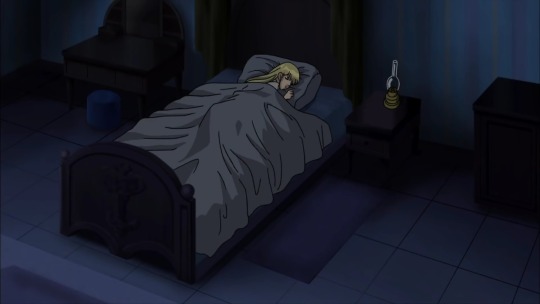
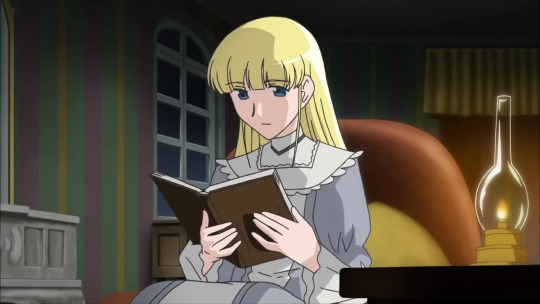
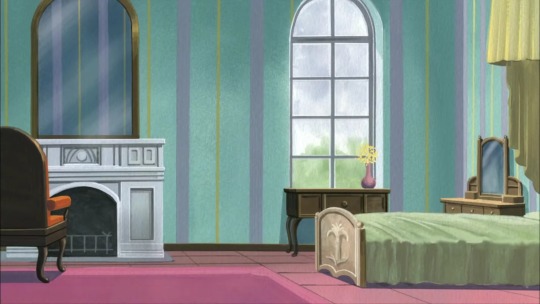
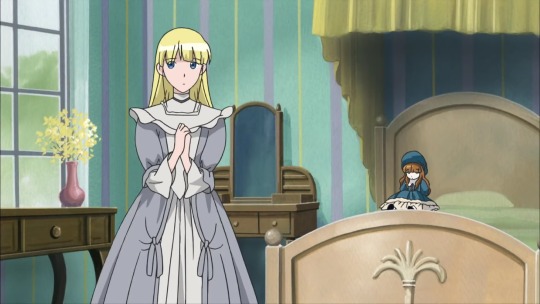
Cosette and the servant occupied the pavilion; she had the big sleeping-room with the painted pier-glasses, the boudoir with the gilded fillets, the justice's drawing-room furnished with tapestries and vast arm-chairs; she had the garden. Jean Valjean had a canopied bed of antique damask in three colors and a beautiful Persian rug purchased in the Rue du Figuier-Saint-Paul at Mother Gaucher's, put into Cosette's chamber, and, in order to redeem the severity of these magnificent old things, he had amalgamated with this bric-a-brac all the gay and graceful little pieces of furniture suitable to young girls, an etagere, a bookcase filled with gilt-edged books, an inkstand, a blotting-book, paper, a work-table incrusted with mother of pearl, a silver-gilt dressing-case, a toilet service in Japanese porcelain.
Well. It's the room that had the most descriptions in the Rue Plumet of course, how Cosette was pampered by Valjean. And, we'll discuss what she had in her rooms. First, her bedroom had painted pier-glasses, which means just a mirror like the below.


Next, she had a canopy bed with damask and a Persian rug. The canopy's shape differed even in the same period but ICDC chosed the left one and 2012 film chose the left one.(Both are from the same period(Late 18 to 19th century.) style but with different designs.)


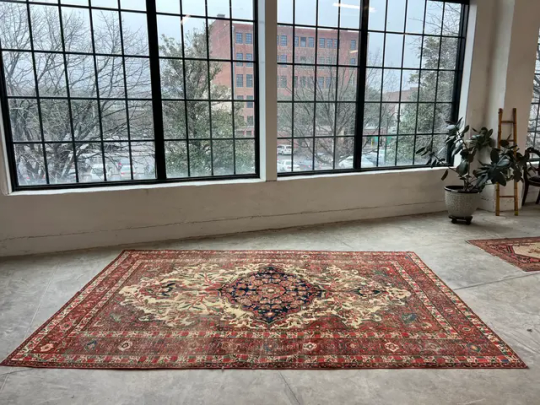
Following is what furniture she had in her room. Etagere(set of shelves), bookcase, lots of books and papers, inkstand, blotting book(became important in later chapter), work table, dressing case and toilet. I brought all of the examples from 19th century.


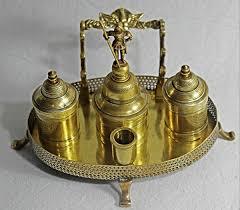
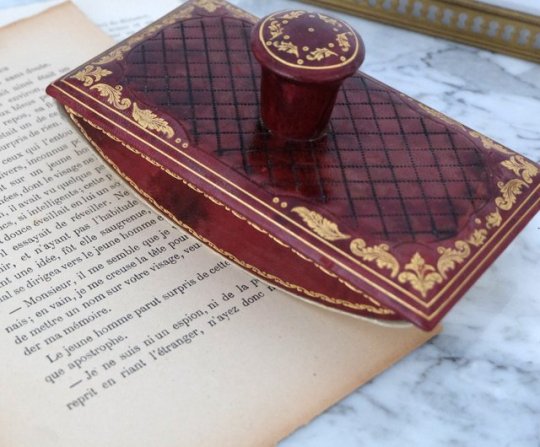



And in the boudoir, it had gilded fillets but I don't get what does this mean. Does this mean the wall structure's fillets or the others?
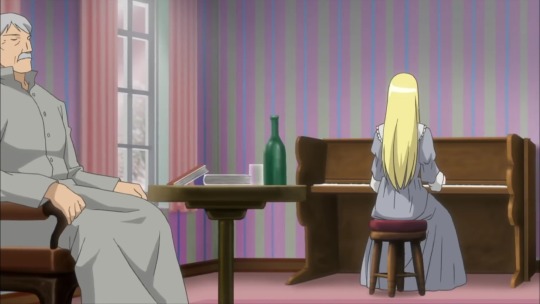
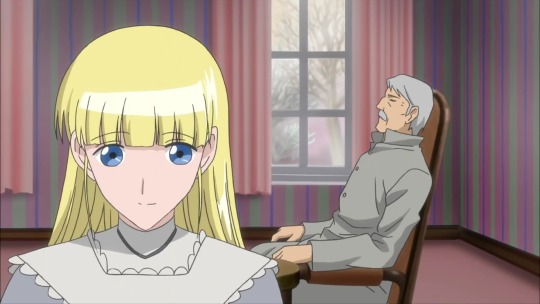
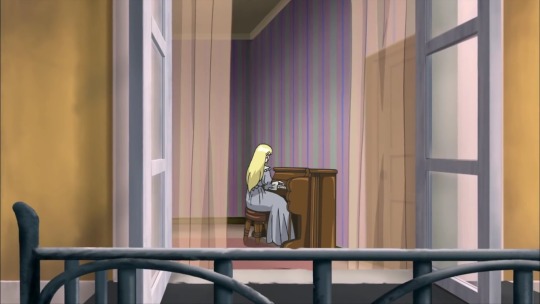
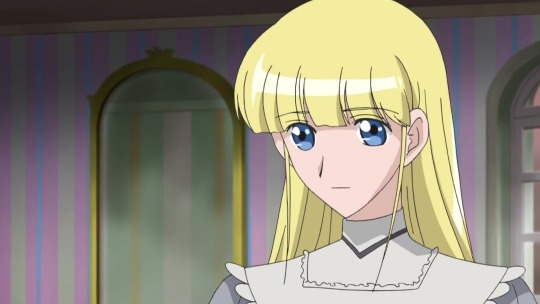
In addition, it seems like the staffs merged the drawing room and bedroon in ICDC, since the armchair was seen in bedroom scenes. and we can see the Paris Green wall on the mirror in the piano-organ scenes. The 19th century's tapestry and armchair, which probably Cosette used.


But I don't get the what's actual piano-organs are. Searched through the internet, and even with the original French word, but the results are always about half the piano and half the organ.(Please help me!)
Plus, I'll add Cosette's bedroom in 2012 film. Though it was only with a few minutes,her but it was beautiful to look and got to see her writing tools and the blotting book.
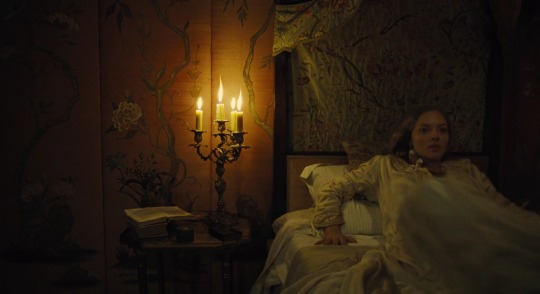
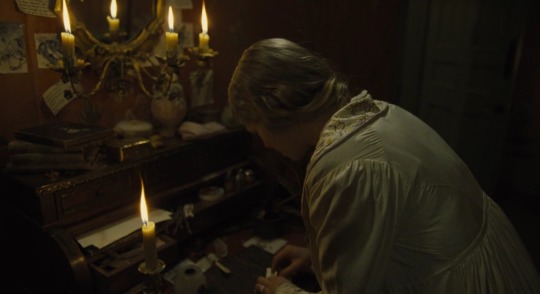
3. Toussaint's Room
Did not have that much information in the Brick nor other adaptations. Probably this is the other chamber mentioned on earlier. Then, it could be that the servant used the almost same room as the master in this way? If this is true, Valjean and Cosette were indeed a good employeer.
The attic and the house of Valjean would be on the last part.
#Les miserables#les mis#My Post#Jean Valjean#M. Leblanc#Cosette#The Lark#Mlle. Lanoire#Mlle. Ursule#Father and daughter#Owl and Wren#Rue Plumet#The House of Secret#The Brick#Places#Meta#Il cuore di Cosette#2012 film#Les Mis Letters
10 notes
·
View notes
Text
My list of favorites and their birthdays for no reason whatsoever.
Gilbert von Obsidian (IkePri): 12/21 (Sagittarius)
Akaza (OlySoi): 8/9 (Leo)
Clavis Lelouch (IkePri): 6/17 (Gemini)
Vlad (IkeVamp): 6/6 (Gemini)
Chevalier Michel (IkePri): 11/1 (Scorpio)
Licht Klein (IkePri): 10/9 (Libra)
Dazai Osamu (IkeVamp): 6/19 (Gemini)
Dante Falzone (Piofiore): 9/17 (Virgo)
Kanetsugu Naoe (IkeSen): 8/1 (Leo)
Kenshin Uesugi (IkeSen): 2/18 (Aquarius)
Sasuke Sarutobi (IkeSen): 4/10 (Aries)
Edgar Bright (IkeRev): 8/23 (Virgo)
Silvio Ricci (IkePri): 7/23 (Leo)
Leon Dompteur (IkePri): 8/1 (Leo)
William Shakespeare (IkeVamp): 11/11 (Scorpio)
Himuka (OlySoi): 8/8 (Leo)
Jean d'Arc (IkeVamp): 1/6 (Capricorn)
Kyle Ash (IkeRev): 7/17 (Cancer)
Rio Ortiz (IkePri): 4/13 (Aries)
Keith Howell (IkePri): 2/20 (Pisces)
Mitsuhide Akechi (IkeSen): 10/4 (Libra)
Kicho: 11/15 (Scorpio)
Fenrir Godspeed (IkeRev): 4/15 (Aries)
Saint-Germain (C:R): 8/2 (Leo)
Victor Frankenstein (C:R): 8/26 (Virgo)
William Rex (IkeVil): 4/24 (Taurus)
Yukimura Sanada (IkeSen): 7/7 (Cancer)
Ray (MysMes): 6/11 (Gemini)
Monshiro (PotBB): 7/7 (Cancer)
Charles-Henri Sanson (IkeVamp): 2/15 (Aquarius)
Yves Kloss (IkePri): 9/16 (Virgo)
Lancelot Kingsley (IkeRev): 1/11 (Capricorn)
Hikage (PotBB): 1/1 (Capricorn)
Harr Silver (IkeRev): 12/12 (Sagittarius)
Riku (OlySoi): 7/15 (Cancer)
Sirius Oswald (IkeRev): 5/7 (Taurus)
Leon (SCM): (Leo)
Jumin Han (MysMes): 10/5 (Libra)
Ichiya Mitsumori (VariBarri): 7/13 (Cancer)
Scorpio (SCM): (Scorpio)
Taiga Isurugi (VariBarri): 12/3 (Sagittarius)
Loki Genetta (IkeRev): 2/22 (Pisces)
Il Fado de Rei (CE): 7/7 (Cancer)
Orlok (Piofiore): 4/23 (Taurus)
Heudhaut (SCM): (Aquarius)
Victor (IkeVil): 2/20 (Pisces)
Ellis Twilight (IkeVil): 7/4 (Cancer)
Elbert Greetia (IkeVil): 1/27 (Aquarius)
Liam Evans (IkeVil): 9/6 (Virgo)
Alfons Sylvatica (IkeVil): 8/8 (Leo)
Jin Grandet (IkePri): 3/5 (Pisces)
Masamune Date (IkeSen): 9/5 (Virgo)
I know the list is long! I love a lot of 2D men. These are only the ones I'd buy merchandise for, so... that's telling you something about my hobby. Color-coded by how much I adore them. Most other characters fall into the next category, which is merch that I'd collect, but not seek out on its own or buy without someone else in the list.
Grand total of loves in each sign
Leo: 8
Cancer: 7
Virgo: 6
Sagittarius: 4
Gemini: 4
Scorpio: 4
Aquarius: 4
Pisces: 4
Aries: 3
Libra: 3
Taurus: 3
Capricorn: 3
Turns out I like Leos the most and subsequently fire signs at 15. This is tied with water signs at 15 and Cancers taking up second place. Virgo is my third favorite sign with earth clocking in at 12. And strangely, air signs only hit 11, which I thought would be my most loved kind since I tend to like Gemini characters, but I guess not.
11 notes
·
View notes
Text

La petite histoire des Deux Magots, café mythique de Saint-Germain
Depuis presque 140 ans dans le quartier de Saint-Germain-des-prés, les Deux Magots sont devenus une véritable institution ! Et on ressent forcément toujours une certaine émotion en s’installant à une table de cette brasserie historique…
Une clientèle mythique
Le café des Deux Magots ouvre en 1885, à la place d’un magasin dont il ne garde que deux figurines chinoises. Ces “Magots”, qui lui donnèrent leur nom, ornent toujours la salle principale. Très vite, des artistes de renom prennent alors l’habitude de s’y retrouver. Notamment Mallarmé, Rimbaud et Verlaine, rien que ça ! Plus tard, il deviendra aussi le QG d’Hemingway, Picasso, Prévert, des surréalistes comme André Breton et des existentialistes avec Simone de Beauvoir et Jean-Paul Sartre.
Quand l’histoire continue
Jouant un rôle important dans la vie culturelle parisienne, les Deux Magots affirment définitivement leur vocation littéraire avec la création du Prix des Deux Magots en 1933. Aujourd’hui, les lundis des écrivains sont un rendez-vous incontournable pour tous les amoureux de la littérature. Un lundi par mois, un auteur est invité à parler de son œuvre et à faire une séance de dédicace. Pour rencontrer votre écrivain préféré, consultez donc le programme et réservez par mail à [email protected] !
7 notes
·
View notes
Text
Podcasts radio : mes ondes 2024
[post in French <3]
J'écoute de plus en plus de podcasts radio. Ils m'accompagnent pendant mes week-end, certains matins, ou (plus régulièrement) quand le ménage commence à devenir nécessaire autour de moi. Et une fois écoutés, certains ne me quittent plus.


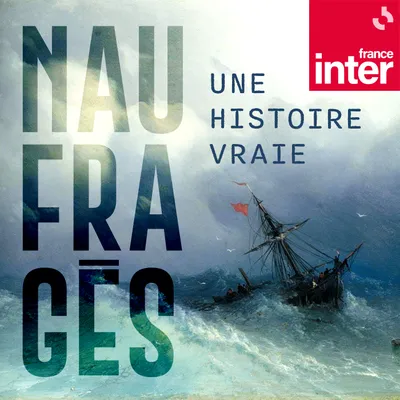
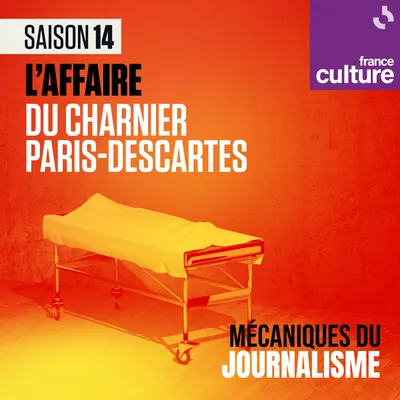



Tuer et mourir au nom de Dieu : Par Anaïs Kien. Pour LSD, Anaïs Kien interroge un évènement marquant de notre histoire, la Saint-Barthélemy. Ce bain de sang national commence à la fin de l’été 1572, il incarne le paroxysme de la guerre civile, l’ultra violence religieuse et le crime d’État par excellence.
Naufragés : une histoire vraie : Par Daniel Fiévet. Coupés du reste du monde sur une île déserte ou sur un radeau à la dérive, confrontés à la faim, au désespoir et à la solitude, ils ont trouvé la force de réaliser l’impossible : survivre.
L'affaire du charnier Paris-Descartes : Par Elise Karlin. En novembre 2019, l'hebdomadaire "L’Express" révèle l’existence d’un charnier au Centre du don des corps de l’université Paris-Descartes. Cette enquête journalistique marque le début d’une investigation judiciaire qui va mettre au jour d’autres aspects d'un véritable scandale politico-sanitaire.
Féminicides, la guerre mondiale contre les femmes : Par Pauline Chanu. Pour LSD, Pauline Chanu retrace le continuum féminicidaire dans le monde entier. Des féminicides conjugaux aux tueries masculinistes, des crimes “d’honneur” aux tueurs en série… Comment se maintient ce système qui autorise les hommes à tuer les femmes ?
La Voix des Invisibles : Dans cette série historique et narrative, l’historien Gérard Noiriel rappelle le rôle essentiel de 10 personnages oubliés ou méconnus, qui ont, à leur manière, été déterminants dans l'histoire de France – de Brunehaut la reine des Francs à Marthe, paysanne des Hautes-Alpes.
Paroles d'histoire : petit canard du lot, car ne provenant pas de l'usine Radio France, Paroles d'histoire est un podcast mené par un historien, accueillant ses camarades de galère pour parler de leurs sujets avec passion et beaucoup de talent (et même de l'humour ! Les nuits dans les mottes castrales sont tout de suite plus courtes!)
Mentions spéciales <3 car il en faut !



Comment finir une guerre : reportage Arte Radio absolument magistral sur la fin de l'organisation basque ETA, et profondément perturbant (attention à l'épisode retraçant une expérience en prison. J'en suis encore tout retourné). Résumé :
En 2011, après plus de 50 ans de conflit, l’organisation basque ETA annonce officiellement la fin de la lutte armée. Au Pays basque, des deux côtés de la frontière pyrénéenne, c’est une page qui se tourne, et l’espoir qu’une paix durable puisse enfin s’installer. Mais la route est encore longue. D’abord, il faut rassembler les armes. Des tonnes d’armes, disséminées dans les campagnes françaises. Puis les rendre au camp d’en face, afin qu’elles soient détruites. Enfin, il faut asseoir les deux camps – ETA d’un côté, les États espagnols et français de l’autre – autour d’une même table. S’écouter et se confronter. S’accorder, juger et réparer. Envisager, pourquoi pas, un avenir commun.
"Le Hussard sur le toit" de Jean Giono : adaptation radiophonique superbement menée ! Première adaptation du genre que j'écoute, et je suis sous le charme !
Nouvelle-Calédonie, terre de défis : du temps long (+10h d'enregistrements datant de quelques années maintenant) pour connaître les problématiques qui entourent la présence française en Kanaky, et les derniers relans de colonialisme français qui y sont en jeu. Des échanges rares dans la radio actuelle, des problématiques qui se posent encore malgré les décennies qui nous séparent des enregistrements...Plus que nécessaire en ce moment.
#saintsaens reads 2024 edition#podcast#radio#radio france#histoire#littérature#actualités#upthebaguette
4 notes
·
View notes